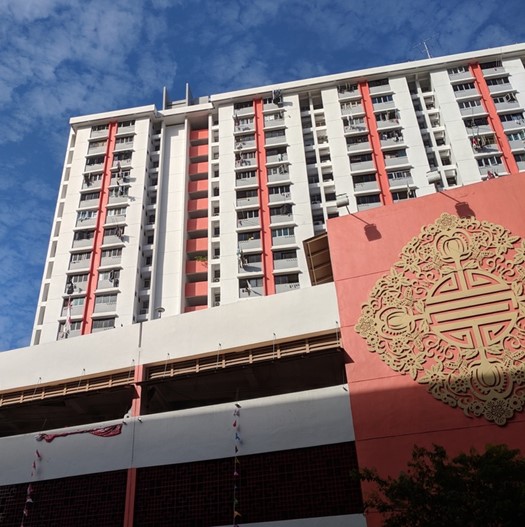Do ethnic integration policies also improve socio-economic integration? A study of residential segregation in Singapore
Blog post by Shin Bin Tan
- Created
- 15 Sep 2022, 10:49 a.m.
- Author
- Shin Bin Tan

Photo: Public Housing Flats in Singapore. Credit: Shin Bin Tan
Residential segregation--where individuals are physically separated into different neighborhoods or areas based on socially constructed categories such as race, ethnicity, gender, class, or religion -- is present in many cities today. While some see it as a neutral manifestation of ‘market forces’, it is instead often the result of deep and hurtful legacies of discrimination and has been demonstrated to have profound negative effects on communities and individuals. One would thus expect policymakers to actively pursue policies to combat and reduce residential segregation, in order to achieve better, more equitable outcomes for people. However, examples of successful efforts of such policies have been far and few in between. Furthermore, policies often target only one dimension of segregation, most commonly either segregation by socioeconomic class or ethnicity/ race. As policies and social forces are likely to affect both ethnic/racial and socioeconomic segregation, a singular focus on either dimension can potentially be problematic as policies to tackle one aspect of segregation may not adequately reduce the other. Relatively little research has been done, however, to document how single-dimension desegregation policies might affect both socioeconomic and racial/ethnic segregation. This empirical gap impedes the development of successful policy measures to tackle residential segregation.
This paper seeks to reduce some of this empirical gap by exploring how a well-known, seemingly successful ethnicity-focused de-segregation policy implemented in Singapore since 1989 may have affected both socioeconomic and ethnic segregation. The Ethnic Integration Policy (EIP) imposes quotas on the ethnic composition of public housing estates, which are developed and sold by the Housing Development Board of Singapore (HDB), and which are where over 80 percent of the country’s population lived. The EIP is one of the few examples of a consistently and robustly implemented anti-segregation housing policy and has thus been touted by international observers as a successful approach to avoid spatial segregation.
Using a combination of aggregated decennial census data and fine-grained residential property transaction data, this study finds that national levels ethnic and socioeconomic segregation, while generally low, fluctuated in opposite directions over the years after the EIP was implemented. The study also finds that public housing flats were generally exposed to lower levels of ethnic and socioeconomic segregation than private housing, which was unrestricted by the EIP—which suggests that the EIP is indeed broadly effective. However, unexpectedly, this study’s analyses also suggest the districts with a majority of its housing stock as public housing had a negative relationship between levels of ethnic and socioeconomic segregation. In other words, those with higher levels of ethnic segregation had lower levels of socioeconomic segregation, on average. One possible reason for this inverse relationship is the EIP's distortionary effect on housing resale prices, which has been found by other researchers to negatively affect lower income sellers, particularly ethnic minorities.
All in all, this study’s findings highlight the need for greater attentiveness to residential integration policies’ impact on both socioeconomic and ethnic integration, which can be complicated and unexpected, and not to assume that policies aimed at improving one would be sufficient to address the other.
Read the accompanying article on Urban Studies OnlineFirst here.


Comments
You need to be logged in to make a comment. Please Login or Register
There are no comments on this resource.